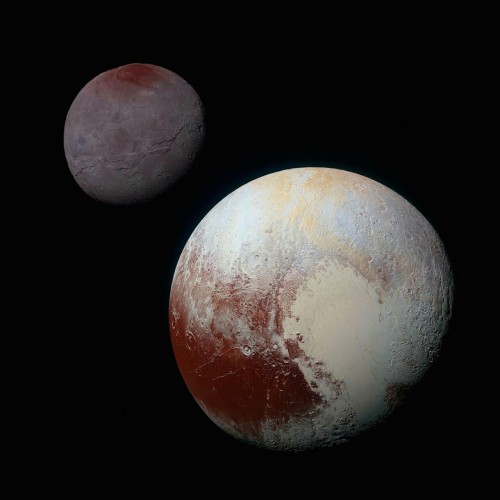Can We Talk About This?
Can we talk about this?
So there’s this physics journal that uses math and science to discuss the realities of fictional universes in a super legit, peer-reviewed manner?
And they did a thing on Frozen?

Combining research on the film?

With info on how water works and stuff?

Then applied math and chemistry (and other things in which I am not especially well versed) to reach this conclusion:

So.

More Posts from Curiositytherover and Others

Scientists Grow Vocal Cord Tissue in a Lab for the First Time, and It Produces Sound
Scientists in the University of Wisconsin-Madison have successfully grown functional vocal cord tissue in a laboratory - yes, vocal cords that work. This remarkable new tissue engineering technique could, someday, be used to restore the voices of patients who have certain voice disorders that are (at the present junctures) untreatable.
Read more at: http://futurism.com/links/scientists-grow-vocal-cord-tissue-in-a-lab-for-the-first-time-and-it-produces-sound/

Roller Coaster Physics.
The principle that underlies the working of a roller coaster is simple. As you ascent to the top, your potential energy builds up. ( i.e the higher you go, longer the distance that the force of gravity can act upon)
This built up Potential energy gets released as kinetic energy downhill. ( Kinetic energy is the energy of motion- linear and rotational).
Now what Roller Coaster Engineers do is abuse this principle to engineering perfection.

NASA is about to light the biggest human-made space fire ever
If a fire breaks out inside the cabin of a small spacecraft, there’s nowhere to run. But in order to figure out how large fires really behave in space, NASA is planning to light one on purpose. How they’re planning to conduct the test.
Follow @the-future-now


latest photos of Pluto and it’s moon.



Kryptos is an encrypted sculpture by the American artist, Jim Sanborn, that is located on the grounds of the Central Intelligence Agency (CIA) in Langley, Virginia. Since its dedication on November 3, 1990, there has been much speculation about the meaning of the encrypted messages it bears. Of the four messages, three have been solved, with the fourth remaining one of the most famous unsolved codes in the world. The sculpture continues to provide a diversion for cryptanalysts, both amateur and professional, who are attempting to decipher the final section. The sculptor has given clues on several occasions.
The solved messages can be read here: [x]
(Fact Source) For more facts, follow Ultrafacts





The plate is called a Chladni plate. When he plays it with a bow (you know, like a violin) the couscous aligns itself it certain patterns. We’re not sure if this is science or magic.




Today in the robot takeover: Disney has built a remote-control device that can climb walls while Singapore scientists created an eerie artificial being that can remember your past conversations (and may haunt your dreams.)

Why the Brain Makes Mistakes
A study conducted at Carnegie Mellon University investigated the brain’s neural activity during learned behavior and found that the brain makes mistakes because it applies incorrect inner beliefs, or internal models, about how the world works. The research suggests that when the brain makes a mistake, it actually thinks that it is making the correct decision—its neural signals are consistent with its inner beliefs, but not with what is happening in the real world.
The research is in eLife. (full access paywall)

This Wristband Tells You Exactly What Vitamins You Need

Researchers Discover Ultra-thin Diamond Nanothreads That Could Support Space Elevator
Today, in order to get to the Moon, an incredible logistical setup is required. From the training needed for astronauts, to the millions of dollars of equipment necessary for space travel, to the cost of rocket fuel—Space flight isn’t easy (or cheap). But what if one can reach the Moon by simply stepping into a small vehicle attached to a cable and pressing a button that says “Moon.”
If what you’re imagining is an elevator, then you are right.
It’s also an idea that several scientists have been trying to realize since 1895, and we have written a number of articles on the feasibility of this tech in the past. Now, with what researchers from the Pennsylvania State University discovered, we may be taking a step closer to achieving that idea.
When they applied alternating cycles of pressure to isolated, liquid-state benzene molecules, surprisingly, it was found that rings of carbon atoms assembled into neat and orderly chains, essentially forming strong ultra-thin diamond nanothreads.
Read more at: http://futurism.com/links/researchers-discover-ultra-thin-diamond-nanothreads-that-could-support-space-elevator/
-
 oceanlilly975 liked this · 2 months ago
oceanlilly975 liked this · 2 months ago -
 bringbackgoth liked this · 3 months ago
bringbackgoth liked this · 3 months ago -
 pearlhoardingdragon liked this · 3 months ago
pearlhoardingdragon liked this · 3 months ago -
 nocapla reblogged this · 3 months ago
nocapla reblogged this · 3 months ago -
 chococococya reblogged this · 3 months ago
chococococya reblogged this · 3 months ago -
 chococococya liked this · 3 months ago
chococococya liked this · 3 months ago -
 mybabygirlelsa liked this · 8 months ago
mybabygirlelsa liked this · 8 months ago -
 vintera liked this · 9 months ago
vintera liked this · 9 months ago -
 tretramonti liked this · 9 months ago
tretramonti liked this · 9 months ago -
 helreginn liked this · 9 months ago
helreginn liked this · 9 months ago -
 wintersovereign reblogged this · 9 months ago
wintersovereign reblogged this · 9 months ago -
 kittylyoko liked this · 1 year ago
kittylyoko liked this · 1 year ago -
 mooon-dusts liked this · 1 year ago
mooon-dusts liked this · 1 year ago -
 holycolordreamertree liked this · 1 year ago
holycolordreamertree liked this · 1 year ago -
 deesculpts liked this · 1 year ago
deesculpts liked this · 1 year ago -
 nocapla liked this · 2 years ago
nocapla liked this · 2 years ago -
 is-your-beauty-just-a-mask liked this · 2 years ago
is-your-beauty-just-a-mask liked this · 2 years ago -
 snowsisterskiss reblogged this · 2 years ago
snowsisterskiss reblogged this · 2 years ago -
 snowsisterskiss liked this · 2 years ago
snowsisterskiss liked this · 2 years ago -
 ullrs-skis liked this · 2 years ago
ullrs-skis liked this · 2 years ago -
 kikigeh reblogged this · 2 years ago
kikigeh reblogged this · 2 years ago -
 kikigeh liked this · 2 years ago
kikigeh liked this · 2 years ago -
 midsummernightseve reblogged this · 2 years ago
midsummernightseve reblogged this · 2 years ago -
 midsummernightseve liked this · 2 years ago
midsummernightseve liked this · 2 years ago -
 thedeathofablog liked this · 2 years ago
thedeathofablog liked this · 2 years ago -
 freefoxmx liked this · 2 years ago
freefoxmx liked this · 2 years ago -
 im-ur-piss liked this · 2 years ago
im-ur-piss liked this · 2 years ago -
 pix-senpai reblogged this · 2 years ago
pix-senpai reblogged this · 2 years ago -
 pix-senpai liked this · 2 years ago
pix-senpai liked this · 2 years ago -
 joe-england liked this · 2 years ago
joe-england liked this · 2 years ago -
 200760 liked this · 3 years ago
200760 liked this · 3 years ago -
 forces06generations reblogged this · 3 years ago
forces06generations reblogged this · 3 years ago -
 r-rk liked this · 3 years ago
r-rk liked this · 3 years ago -
 shadowicepuma liked this · 4 years ago
shadowicepuma liked this · 4 years ago -
 ultramarin-echt reblogged this · 4 years ago
ultramarin-echt reblogged this · 4 years ago -
 squidderific liked this · 4 years ago
squidderific liked this · 4 years ago -
 littleredfox0190 reblogged this · 4 years ago
littleredfox0190 reblogged this · 4 years ago -
 funfettirapunzel reblogged this · 4 years ago
funfettirapunzel reblogged this · 4 years ago -
 funfettirapunzel liked this · 4 years ago
funfettirapunzel liked this · 4 years ago -
 saints87 reblogged this · 4 years ago
saints87 reblogged this · 4 years ago -
 kittyklippings reblogged this · 4 years ago
kittyklippings reblogged this · 4 years ago -
 kittyklippings liked this · 4 years ago
kittyklippings liked this · 4 years ago -
 dearsheroozle reblogged this · 4 years ago
dearsheroozle reblogged this · 4 years ago -
 dearsheroozle liked this · 4 years ago
dearsheroozle liked this · 4 years ago -
 omnifitense reblogged this · 4 years ago
omnifitense reblogged this · 4 years ago -
 imperiumalbion liked this · 5 years ago
imperiumalbion liked this · 5 years ago -
 frozen-4-life-and-ever liked this · 5 years ago
frozen-4-life-and-ever liked this · 5 years ago